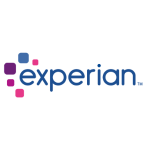- Products

Enjoy a free 30-day trial of our
data validation software.Experience the power of trusted data
solutions today, no credit card required! - Solutions

Enjoy a free 30-day trial of our
data validation software.Experience the power of trusted data
solutions today, no credit card required! - Partners

Enjoy a free 30-day trial of our
data validation software.Experience the power of trusted data
solutions today, no credit card required! - Learn more
- Pricing
- Contact Us
What is DataOps?

DataOps is an up-and-coming trend in the data and analytics space that deserves the hype it is getting. This practice brings agility to your data operations, which 62 percent of business leaders we surveyed say they struggle with. With all this hype, one can easily be swept-up without really understanding the basics. Let’s dive into what this new trend is and why you want to incorporate it into your data operations today.
What is DataOps?
In our most recent research, DataOps was defined as the automation and monitoring at all steps of data pipeline construction, from data integration, testing, releasing to deployment and infrastructure management. DataOps aims at shorter development cycles, increased deployment frequency, and more dependable releases of data pipelines, in close alignment with business objectives.
When it comes to DataOps, it’s important to realize that this is not a tool but a practice. In past years, many organizations looked to move toward agile development in the form of DevOps. The idea was to put a product out in the market to receive real-time feedback then iterate quickly to develop and respond to market forces in a much more effective manner. Now, businesses are using this same concept for data practices. Bringing product management techniques to data pipeline activities.
Why is DataOps important?
While many organizations are looking to be data-driven and to improve the level of data insight leveraged on a daily basis, most have not made this vision a reality. While there are many factors at play in this scenario, a lack of flexibility in data management and data practices is partly to blame.
Most data practices are structured today in the form of dashboards. A business may make a request to a data team or IT group and a dashboard is created that allows individuals to see specific data points. However, there is not always a feedback loop or the ability to argue with that data and insight in real-time. The data pipelines are kept secret and very few individuals have enough data knowledge to leverage insights to the fullest.
DataOps paired with data literacy allows for organizations to better take advantage of data insights by pairing education with agile data practices. It is incredibly powerful and something many are looking to take advantage of in the coming months and years.
Our research uncovered over half of businesses have some sort of DataOps program today and another quarter would like to implement this type of program.
Some of the key reasons organizations are adapting DataOps are:
- Brings more agility to data management.
- Allows for operational efficiency.
- Ensures accuracy in data management.
- Improves data accessibility.
- Supports innovation.
How to get started with DataOps
Bringing agility to your data practices through DataOps isn’t a one-time project—it’s a discipline that improves over time. To get started, first think about how to frame your DataOps discussions. Here are some areas to consider as you get started:
- Know your advocates and skeptics. Since DataOps is a newer concept, it hasn’t won over everyone in the business yet. In our research we found that those who are traditionally more responsible for data are largely in favor, like the CIO/CTO, CDO, and CEO. Leaving the skeptics to be end users, the CFO, and CMO.
- Hire or train data expertise. One of the biggest challenges businesses have with DataOps is a lack of expertise. While it is a new concept, skilled data professionals, like data engineers, can help bring agility to data pipelines and leverage technology to elicited feedback and automate adjustments through machine learning techniques.
- Rethink your technology. These new agile data practices will require a new set of technology. While DataOps is a principle, it is aided by technology. Look around your data management technology stack and identify which capabilities are easy to use and are agile in how they will allow you to iterate your data workflows and pipeline. You should be able to profile data with ease, while also adjusting workflows to build repeatable processes that can be iterated over time. Ideally, there should be collaboration capabilities build-in to key data management practices.
DataOps is about bringing agility and speed to your data practices. Start the conversation within your business to see how more agile data practices could help you achieve business objectives.



